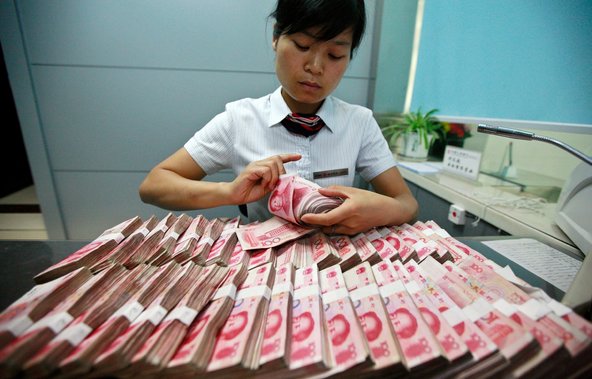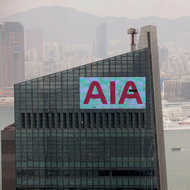Starting Wednesday, passengers approaching the old runway will do so at crawl speed — and from the sea, rather than from the air. After 15 years of lying idle, the former airport will reopen its gates to the world’s travelers — as a cruise ship terminal at the southern end of the old runway.
Gleaming silver, and 850 meters, or about half-mile long, the new terminal building has airy immigration and check-in halls reminiscent of, yes, an airport. A large, manicured rooftop garden with 360-degree views of the Hong Kong skyline will open to the public in the next few months. And the terminal’s two berths will be able to accommodate the largest cruise ships in the world — behemoths more than 300 meters long that can carry thousands of passengers.
The first of those giants — the 15-deck, 310-meter Mariner of the Seas, operated by Royal Caribbean International and carrying more than 3,000 passengers — is scheduled to dock at the terminal Wednesday evening.
The new terminal cost 8.2 billion in Hong Kong dollars, or about $1 billion, and was designed by the architectural firm of Norman Foster, whose other designs include plans for the renovation of the New York Public Library. Mr. Foster’s firm also designed the larger airport that replaced Kai Tak in July 1998.
For now, most of the old airport, including the area where the terminal building once stood, lies empty, the shiny new cruise terminal awkwardly isolated at the far end of the former runway. The nearest neighborhoods — Kwun Tong and Kowloon Bay — are somewhat rundown, and until planned public transportation connections are completed in the coming years, the terminal building’s rooftop gardens will be tough for ordinary visitors to reach.
While Hong Kong is home to one of the busiest container ports in the world, cruise companies held off factoring the terminal into their itineraries until it was actually finished. Just 19 ships are scheduled to dock at the new terminal in the next 12 months.
Still, industry executives say they believe that traffic will gradually increase as cruise activity in Asia picks up, and Hong Kong policy makers see the project as crucial to expanding tourism in the city.
Gregory So, the Hong Kong secretary for commerce and economic development, said at a media briefing last week that the new terminal would “greatly enhance the berthing capacity for cruise ships in Hong Kong, thereby enhancing our competitiveness and attractiveness.”
The decision to convert the old airport site is, in essence, a bet on Asia’s growing appetite for travel.
Over the last few decades, thanks to rising affluence and improved transport links, Asia has evolved from being primarily a destination for wealthy Westerners to being an increasingly important source of new travelers — Asians journeying to places within the region and beyond. Travel from mainland China, in particular, has soared, making the country both the biggest source of foreign tourists in the world, and the biggest spender in global tourism, according to the World Tourism Organization.
This growth has yet to extend into the cruise ship segment, which remains overwhelmingly focused on travel within the Mediterranean and the Caribbean. Just under two-thirds of the roughly 21 million people in the world who will take a cruise this year will come from North America, and about 27 percent will come from Europe, according to Cruise Market Watch, an American firm that compiles data on the industry. Only about 7 percent come from Asia.
In part, that is because Asians have only recently begun to approach travel as something that involves relaxation and leisure, rather than an activity focused on shopping and sightseeing, said Liu Zinan, chairman of the Asia Cruise Association and vice president of Asia for Royal Caribbean.
The lack of terminals that accommodate cruise ships also has hampered growth in the region.
“Compared to the Mediterranean and the Caribbean, there is a paucity of destinations for cruise ships to go,” said Jeff Bent, managing director of Worldwide Cruise Terminals, which manages the new terminal in Hong Kong. “Cruise lines have fewer options to put together interesting itineraries.”
That is changing rapidly as port cities and cruise companies race to expand their capacities in the region.
“The market potential for cruising in Asia is huge as the total potential number of cruise passengers could reach 3.7 million by 2017, and double to over seven million by 2020,” said Pier Luigi Foschi, the Asia head of Carnival Cruise Lines, which opened an office in Singapore last month to spearhead its operations in the region.
Singapore opened a large new cruise ship terminal last year, which, like the new center in Hong Kong, can handle ships as large as 220,000 tons. The terminal expects 100 ship calls in the coming cruise season, which runs from October to May.
In Hong Kong, the debut of the Kai Tak Cruise Terminal opens the city to superlarge cruise liners, which are too large to dock at the existing Ocean Terminal, just across Victoria Harbor from the city’s skyscraper-studded financial district.
And in mainland China, new operations have been developed in several coastal cities.
“Hong Kong, Shanghai, Tianjin, Singapore — they are all racing with each other to become leading cruise ports in the region,” said Mr. Liu of Royal Caribbean. Hong Kong’s geographic location and hotel and transport infrastructures, he added, mean the new terminal will be an important feature on tour operators’ itineraries.
Anyone who might want to reminisce over the old Kai Tak Airport and its legendary flight approach, however, will have to look elsewhere. The new building retains little of the site’s former incarnation, though a park being planned alongside it will have an “aviation theme.”

Calvin Yang contributed reporting from Hong Kong.
Article source: http://www.nytimes.com/2013/06/12/business/global/hong-kongs-old-airport-reopens-as-a-cruise-ship-terminal.html?partner=rss&emc=rss


